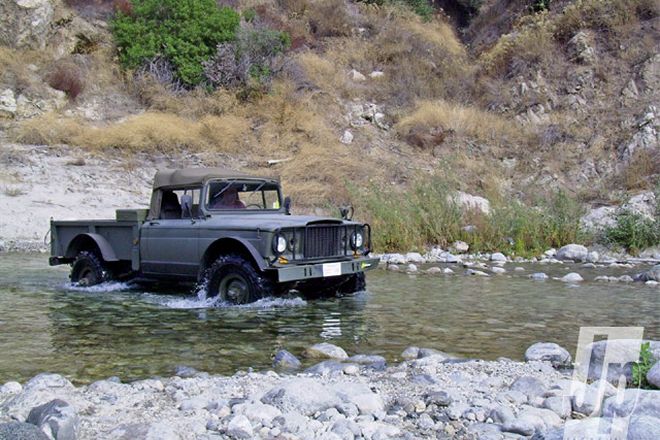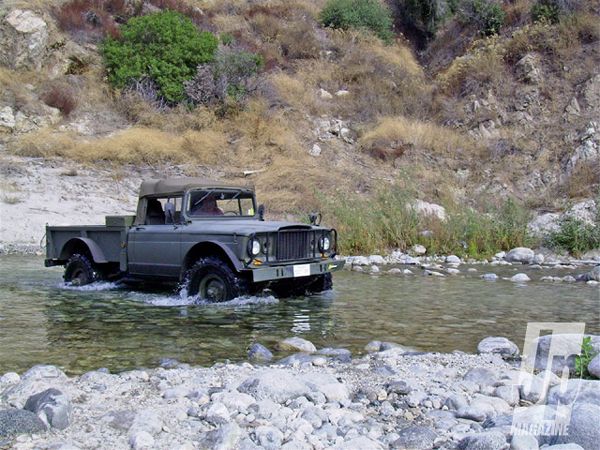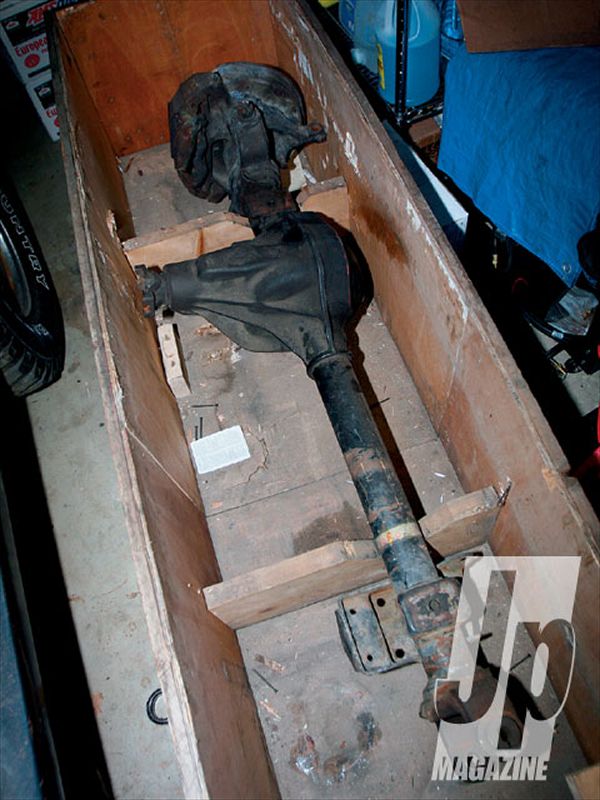
 Pete Trasborg
Brand Manager, Jp
Pete Trasborg
Brand Manager, Jp

"We decided to swap our M-715's front Dana 60 and rear Dana 70 for a front Dana 60 and a rear Dana 70."
Everyone who heard us utter that line in the past few weeks gets this confused look on their face, and then says "Huh? Why?" On the surface, it just doesn't make much sense. What we wanted was a heavier-duty pair of axle assemblies for our military truck. So why swap in the same axles it already has?
While the stock axles and the new axles have the same model numbers, there are virtually no parts that interchange between them. The M-715 was the one of the first vehicles with a Dana 60 and Dana 70 under it. In the 40-plus years since our truck was designed, metallurgy has improved, gear sets have become more standardized, open knuckles have become the norm, and drum brakes are no longer the only type of brake available.
 When we got the front Dana 60, we didn't know what it came out of; all we knew was that it was missing all the passenger-side components and that it was a high-pinion axle. Heck, the guy we got it from didn't even know what a Dana Bill of Materials number was, so until we saw it we didn't really know what we were getting. Still, for $300 when we knew we'd want dually hubs anyway, it wasn't that bad of a deal.
When we got the front Dana 60, we didn't know what it came out of; all we knew was that it was missing all the passenger-side components and that it was a high-pinion axle. Heck, the guy we got it from didn't even know what a Dana Bill of Materials number was, so until we saw it we didn't really know what we were getting. Still, for $300 when we knew we'd want dually hubs anyway, it wasn't that bad of a deal.
By all rights, our axles should have given up the ghost a long time ago. Our M-715 weighs 6,500lbs normally, and once all the tools from our roll-away tool chest, camping gear, grill, cooler, spare parts and everything else is in the truck for a weekend campout, it's more like 7,500-8,000lbs. On the bright side, it rides a lot nicer than an empty M-715 does. On the downside we can practically hear our stock axles screaming in agony every time we feed that big-block some gas.
A goofy bolt pattern, closed front knuckles, and drums that get out of whack every time we went in the mud were but a few burrs in our side. Add to that a limited gear selection, an offset rear axle, and limited parts availability when out in the boonies and we'd had enough. Check out the sidebar for the head-to-head comparison between the new parts and the old parts.
Any way you cut it; building a Dana 60 front axle isn't cheap. We want our truck to retain its military look when we are all done, and by using parts that many guys don't want, we are aiming to keep costs down. To keep the military look, we are planning on running HMMWV wheels and tires, and the big backspacing of those wheels will necessitate wide axles to keep the tires out of the frame and springs.
The ball joint front Dana 60 isn't as popular as the kingpin axle, so we were able to score most of an axle for $300. Most guys build these axles for 65 to 70 inches WMS to WMS. The 715 axles are around 72 inches wide so we knew we'd need something wider than what most guys ran, especially with using those HMMWV rims, which meant building a dually-width front axle.
To build a heavy-duty rear axle, as many of you know, is way cheaper than building a front Dana 60. Only select 1-ton trucks came with front Dana 60's, while all 1-ton and even most 3/4-ton trucks came with beefy full-floating rear axles. So, thanks to more of them laying around, it is cheaper and easier to build the rear axle. We went with a Dana 70HD out of an '87 Chevy dually because of the ultra-wide width we were aiming for.
It isn't until you drag a part home and start working on it that you really start learning about it, and we literally just pulled the rear axle out of the junkyard before sitting down and writing this. You can do all the internet searching you want, but in the end, nothing beats hands-on experience. While it will be a few months before we've got these things built and slung under our truck, here's some of what we learned while wrestling a pair of 500-lb axles.








 Head-to-head Stock Dana 60 {{{Ford}}} Dana 60 Stock Dana 70 Chevy Dana 70 Architecture: low-pinion high-pinion full-floating full-floating Width (in): 73 1/2 69 (as-built 78 1/8) 72 1/2 73 3/8 (as-built 76 7/8) Bolt Pattern: 6 on 7 1/4 8 on 6 1/2 6 on 7 1/4 8 on 6 1/2 Axlehaft Diameter (in): 1.31 1.50 1.5 1.5 Axleshaft Spline Count: 30 35 23 35 Tube Diameter (in): 2.8 3.125 3.54 4 Tube Thickness (in): 3/8 1/2 1/2 1/2 Input Torque Rating (lb-ft): 935 1,500 1,450 1,750
Head-to-head Stock Dana 60 {{{Ford}}} Dana 60 Stock Dana 70 Chevy Dana 70 Architecture: low-pinion high-pinion full-floating full-floating Width (in): 73 1/2 69 (as-built 78 1/8) 72 1/2 73 3/8 (as-built 76 7/8) Bolt Pattern: 6 on 7 1/4 8 on 6 1/2 6 on 7 1/4 8 on 6 1/2 Axlehaft Diameter (in): 1.31 1.50 1.5 1.5 Axleshaft Spline Count: 30 35 23 35 Tube Diameter (in): 2.8 3.125 3.54 4 Tube Thickness (in): 3/8 1/2 1/2 1/2 Input Torque Rating (lb-ft): 935 1,500 1,450 1,750